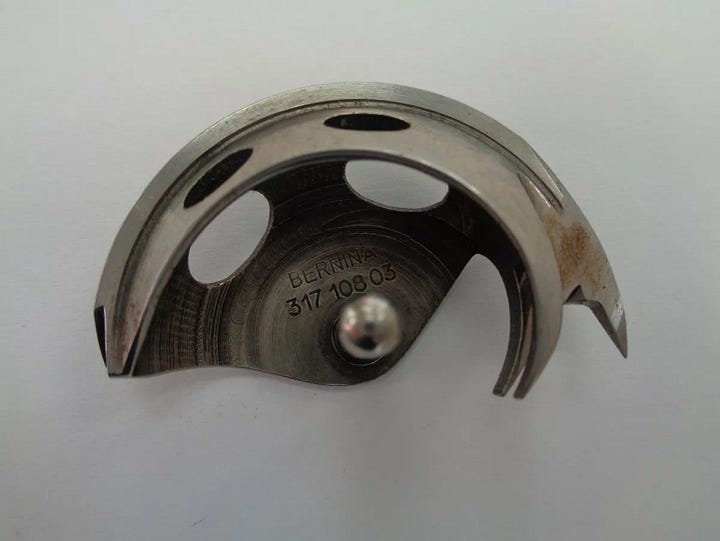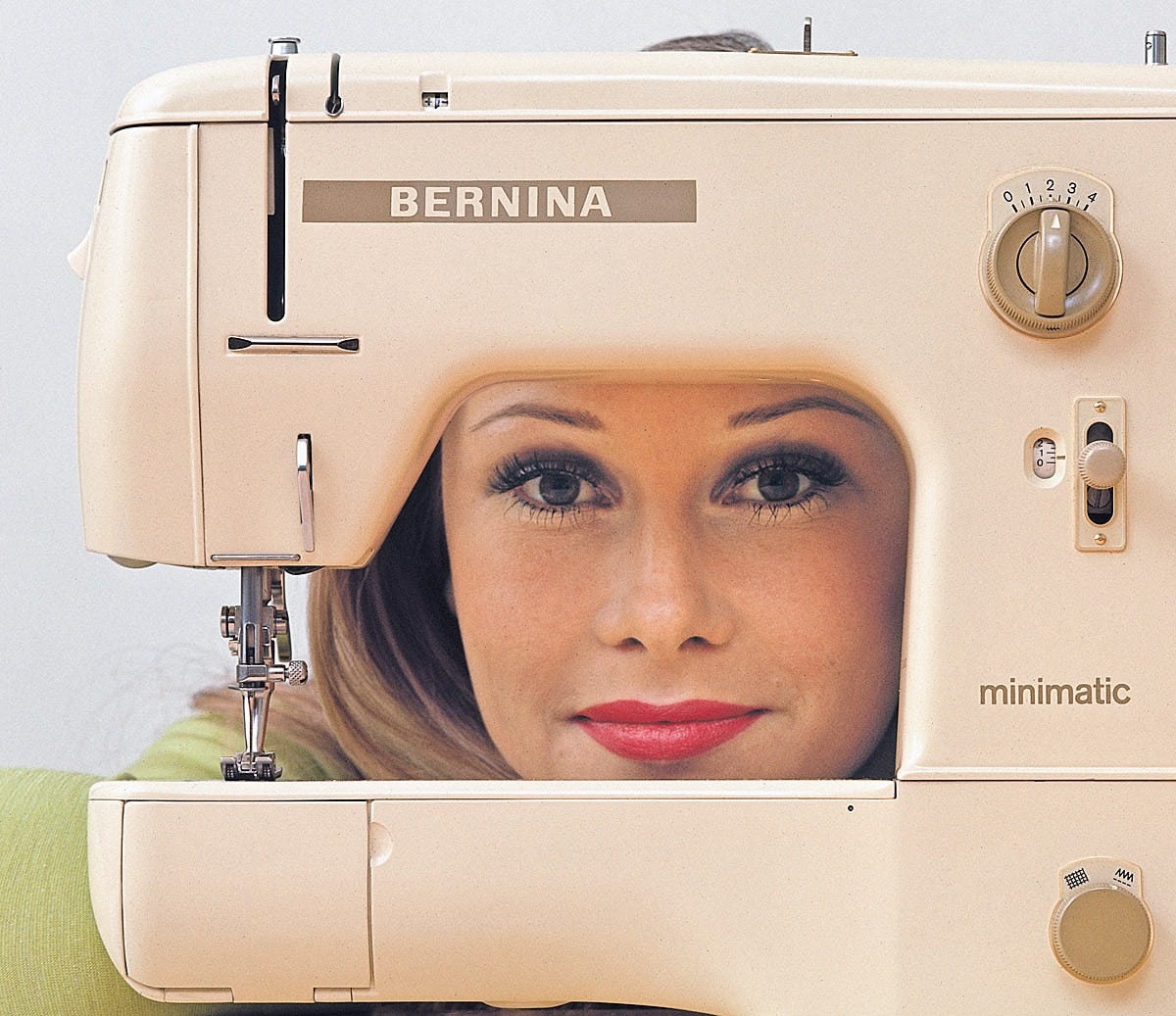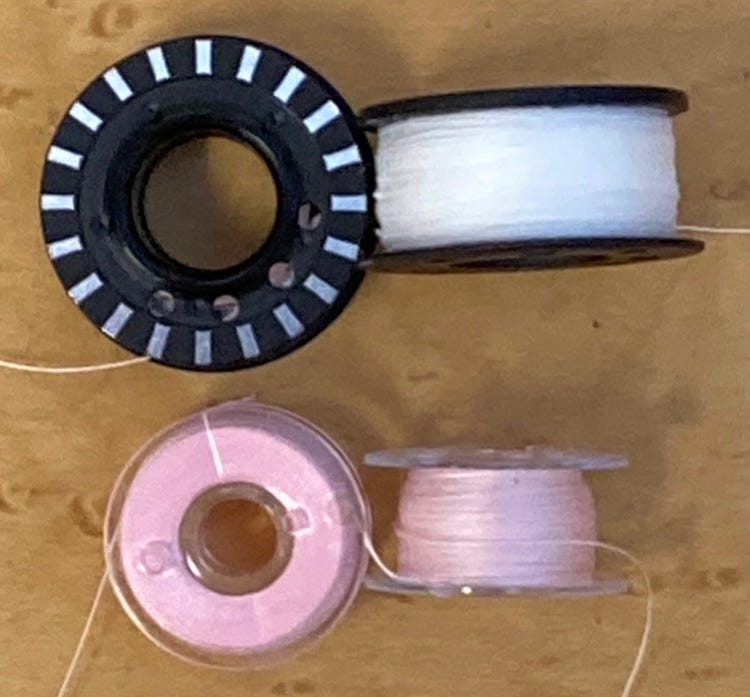Bernina's Fascinating Trajectory Over The Past 60 Years
Part 2 of The Sewing Machine Landscape Article Series
Greetings everybody,
This edition of The Sewing Machine Newsletter is Part 2 of an ongoing article series I am writing on the sewing machine landscape as it stands in 2023/2024. Part 1 of the article series focused on some of the iconic European sewing machine manufacturers of the 20th Century. Part 2 is dedicated to the only family-owned sewing machine manufacturing company left in the industry: Bernina.
As discussed in Part 1, ownership of all the European sewing machine manufacturers changed hands by the end of the 20th century… all except Bernina. What allowed the Swiss company to survive? My goal for this article is answer this question by telling the history of Bernina through the lens of their evolving sewing machine design and technology over time.
I hope you enjoy.
-Cale
BERNINA
Bernina was founded in 1893. I am sure they made some fantastic machines in the first half of the 20th century, but I am not concerned with any of them for the purpose of this article. I am going to start the story in 1971, the year when Bernina released the 830 Record.
830 Record
The 830 Record is important because it popularized Bernina’s CB Motion hook system, also known as an oscillating hook system. As seen in the video below, it is designed with a vertical hook system, which takes a front loading bobbin (opposed to the top-loading bobbins you see on modern Japanese machines). However, unlike other vertical rotary hook systems where the hook constantly rotates clockwise, the hook point on a Bernina CB hook system oscillates back and forth in each direction. This type of hook system produces a beautiful quality stitch, plus the steel-on-steel front loading design gives the user a heavy industrial-esque feel when sewing that sewists absolutely love.
The 830 Record was a hit, so much so that Bernina released the 930 Record 10 years later in 1981 with very few notable changes. In my opinion, the lack of differentiation between the 830 and 930 is symbolic in the sense that Bernina recognized they had an incredible product, so they chose to lean into their strengths. As the saying goes, “if it ain’t broke, don’t fix it.”
As we plunge on into the 1980’s, we enter the dawn of the computerized sewing machine age. At this point, Bernina knows that people love the stitch quality that their CB Oscillating hook machines produce, so they smartly stay with that platform. However, they do begin to integrate some computerized features. For example, in 1986 they come out with the Bernina 1130, which has a selection of computerized stitch patterns, as well as automatic one-step buttonhole.
Bernina Runs Into A Problem…
Let’s fast-forward to the 1990’s.
Bernina continues to manufacture new machine models, each iteration offering minor changes and upgrades to the machine’s interface and computerized functions. The key word I want to stress here is minor changes. I know I am repeating myself, but my perspective is that Bernina already figured out how to create a machine with beautiful stitch quality and a wonderful heavy feel that sewists absolutely loved. It’s the reason they were able to gain the loyal following that they have to this day, so they decided to hang their hat on that strength for 20+ years.
But this is where Bernina runs into a problem. One could accurately say that Bernina had been relatively stagnant and stubborn in the design of the sewing machines since 1971. Meanwhile, other manufacturers were much more innovative. Pfaff and Viking figured out features like automatic thread trimmers and electronic presser foot lift and larger stitch width capabilities. Japanese companies were investing in machine embroidery and automatic needle threaders and touchscreens. I would categorize most of the features I just mentioned as “ease-of-use” features, which sewists tend to really like.
Bernina could not integrate these features into their machines because of the platform they were committed to. From an engineering perspective, it is literally impossible to integrate 9-millimeter stitch width or automatic thread trimmers into a machine that uses Bernina’s CB Oscillating hook system. There was a demand for such features, so Bernina decided to pivot. In 1993 they come out with the 1630, which is essentially a remake of the very popular 1530, but designed with a rotary hook system instead of CB Oscillator. This rotary hook system gave the 1630 the ability to do larger decorative stitches because it had a 9-millimeter stitch width instead of the 5.5-millimeter maximum stitch width of the previous models.
The Short-Lived Era of Bernina Rotary Hook Machines
We now enter the era of Bernina rotary hook machines. In 1998 Bernina came out with the Artista 180, a true computerized machine equipped with all the ease-of-use features that previous Bernina machines did not have -- thread trimmer, needle threader, 9 mm stitch width, etc. Then, in 2002, Bernina collaborated with Microsoft to manufacture the Artista 200, equipped with a CD-ROM, LCD screen, and memory functions for stitch combinations and embroidery designs.
Generally speaking, people did not like this era of Bernina rotary hook machines. My reason for saying this is twofold. One, I work in a shop that repairs sewing machines and has sold Bernina’s for 25+ years. Every week we receive 10+ Bernina machines for service, and the rotary hook models are by far the least common. People who once owned one of these models usually have moved on to another machine by now. The second reason for my claim is that Bernina stopped manufacturing rotary hook machines altogether. Why? My bet is that they were aware their customer base did not like them as much as the CB Oscillating hook machines, so the company came to the conclusion that rotary hook Bernina machines were not a long-term solution to their problem.
A point to support my claim is the Aurora 440, which Bernina released in 2004. The Aurora 440 is the first home sewing machine with a stitch regulator for free motion sewing— dubbed BSR, which stands for Bernina Stitch Regulator. This was a revolutionary game-changing piece of sewing technology, and Bernina knew it. Therefore, they did not design the Aurora 440 with their less-than-satisfactory rotary hook system. When Bernina unveiled the new BSR technology with the Aurora 440, they went back to the old-school CB Oscillating hook system, which, in hindsight, was a telling sign of things to come.
The Problem
Let me take a moment to review Bernina’s problem in the early 2000’s:
Sewists liked the heavy feel and beautiful stitch quality of Bernina CB Oscillating Hook machines.
Sewists also liked modern features like automatic thread trimming and 9 millimeter stitch width capability.
Bernina’s CB Hook platform is incompatible with said features.
Bernina began making sewing machines designed with a rotary hook instead of a CB Hook because the rotary hook allowed Bernina to integrate said features.
However, machines with the rotary hook did not produce the same feel and stitch quality as CB Hook machines, and Bernina loyalists knew it.
How can Bernina make a machine with same feel as their CB Hook machines, but with the modern features of a rotary hook machine? In the early 2000s, that is the problem that needs to be solved.
The Problem Gets Solved
In my opinion, the release of the Bernina Stitch Regulator in 2004 is a landmark event. It marks the point in time when a switch gets flipped and Bernina goes from being a manufacturer stubborn in their tried and true 1970’s design, to arguably the most innovative sewing machine manufacturer in the world.
Not long after they unveiled the BSR, Bernina came out with two new machine platforms that were completely novel to the industry. In 2009 they released the new 830 (a far cry from the 830 Record), which has an extremely exotic design that required 15 patent applications, punctuated by the craziest bobbin loading system you’ve ever seen. While it’s cool to see so much innovation on one machine, I would argue the new 830 platform was over-engineered. From my experience, the new 830 is designed in a way that lends itself to user error and often leads to frustration
I am much bigger fan of the second new platform that Bernina released in 2012, which includes a series of machine designed with Bernina’s patented B9 Hook System.
The B9 Hook system solved Bernina’s problem. The hook is large and made of steel, so it offers the heavy feel and beautiful stitch quality of the old-school CB Oscillating Hook Bernina machines, while also being compatible with automatic thread trimmers and 9-millimeter stitch width.


In addition, the B9 Hook system requires a larger bobbin case, which means a larger bobbin is required as well. Bernina calls these bobbins “Jumbo” bobbins, and they hold 70% more thread than the bobbin used by Japanese-made sewing machines.
With the release of the B9 hook system, all of sudden Bernina emerges as arguably the most innovative sewing machine manufacturer in the world:
B9 hook system delivers beautiful stitch quality and offers a heavy, industrial-esque feel to the machine. It marries the best aspects of the CB Hook system with the best aspects of the rotary hook. What other sewing machine company has come close to successfully doing something like that?
Jumbo bobbins hold 70% more thread than traditional bobbins.
Bernina is the only sewing machine manufacturer who makes a home sewing machine with stitch regulation capability (BSR) for free motion quilting.
Higher-end Bernina models come with built-in dual feed (e.g. B740, B570, B770)
Machines designed with the B9 Hook System are also designed with a beautiful touch screen and built-in instruction manual easily accessed on the screen.
Bernina’s Creative Consultant software is built into their B9 Hook machines.
Some higher-end Bernina machines (B570, B770) are compatible with an embroidery unit, but don’t require the buyer to purchase an embroidery unit with the machine — you can always purchase an embroidery unit later if you so choose. Having this option is unique to Bernina.
Commons machines I see at The Sewing Machine Shop that are designed with a B9 Hook System: B710, B750, B740, B735, B770, B790, B570, B535, B435, B475, B480.
2023 - Bernina Approaches an Inflection Point
As much as I love Bernina and the design of the B9 Hook system and the features they offer to sewists, I have come to believe that the Swiss company is now approaching an inflection point in 2023.
For the past 10 years, if someone was to make the claim that Bernina makes the best pure sewing machine in the world, I wouldn't have had very many reasons to disagree. However, in 2023, this is no longer the case. The rise of three Japanese sewing machine manufacturers has completely changed the sewing machine landscape and put Bernina in precarious position.
Baby Lock makes the best sergers and coverhem machines in the world.
Brother leads the pack when in comes to machine embroidery, and they also make the best entry level sewing machines between $500-$1,000.
Janome makes incredible sewing machines. They make the best machines for less than $500. They makes an incredible premium-level series of machines that cost between $1,200-$2,000. Then, a couple months ago they released the new Janome Continental M8, the first home sewing machine other than Bernina with stitch regulation, and arguably the best home sewing machine ever created (I will argue this in an upcoming newsletter).
Bernina has a great customer base who loves their products, but the time has come for another innovation explosion. In the past 10 years, other sewing machine companies have designed new products and caught up... so what is next??? If this was a game of chess, then it is certainly Bernina’s turn to make a move. I am excited to see what they do, because if history is any indication of what is come, then I expect that they will surely alter the sewing machine landscape for the better.
Thank you for reading.
Click HERE to read Part 1 if you haven’t done so already
Please share or comment if you feel inclined.
I appreciate your support.
-Cale







One of my students gave me her Mom's old Bernina Record- I think it is the 830. It's hard to get it from the floor it's so heavy!
Great article! I have a Bernina 1001 that still works great. I bought it in 1990 I think for a little over $300. It has a foot pedal instead of the knee lever. When I described it back then to another lady who loved Berninas, she didn't believe me!